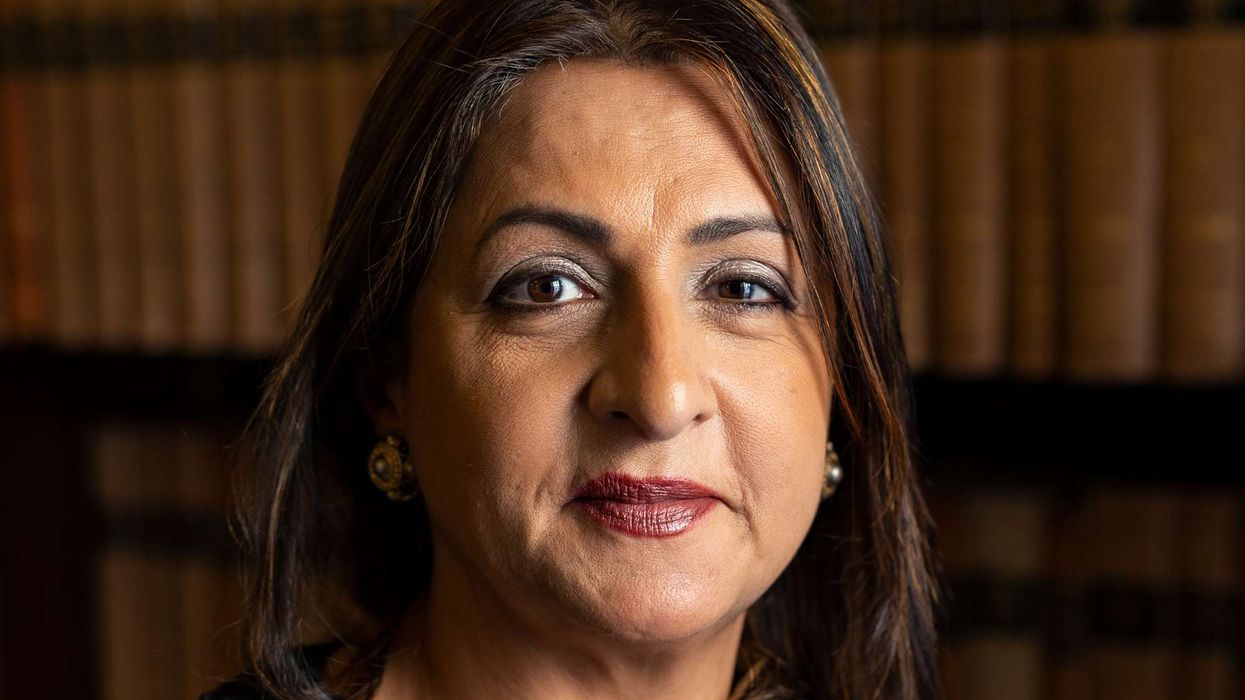LABOUR’S vote among British Asians was down 28 per cent in the July national election, a new report has shown, highlighting how party support fell in constituencies such as the east and west Midlands, Yorkshire and Humber, where pro-Palestinian independents made huge gains.
Analysis of voting patterns in the summer election also showed the Conservatives held on to their ballot share among British Hindus in a repeat performance of the 2019 general election.
‘Minorities Report’, published by UK in a Changing Europe on Tuesday (8), examined the attitudes of Britain’s ethnic minority population.
It commissioned Focaldata to look at how Asian and black groups voted, as well as their views on race, equality, economy, the NHS and welfare, among other issues, in the UK.
Professor Anand Menon, director, UK in a Changing Europe, told Eastern Eye, “The majority of ethnic minority votes are still backing Labour”.
The party led the Conservatives among ethnic minority voters by 29 percentage points, compared to eight percentage points among white voters.
James Kanagasooriam, chief research officer at Focadata and research fellow at UK in a Changing Europe, said, “We are at an inflection point in terms of how ethnic minorities vote.
“The fall of a clutch of Labour seats with large Muslim populations to independents (and to the Conservatives in Leicester East) was not on anyone’s election bingo card.”
He added, “The political, social and economic values of British Indians and British Chinese voters, and to a lesser degree black African voters, are structurally different from other minority groups – in particular British Caribbeans and British Muslims.”
Among non-white Britons, graduate-level education makes voters proportionately more likely to be Conservative, the analysis found.
It also showed that British Indians and British Chinese voters tend to be right wing on the economy, expectations of the nation state, and views on welfare, while other minority groups sit more firmly on the left.
In the July election, the combined vote share of Labour, the Greens and the Liberal Democrats was 66 per cent among ethnic minorities, while that for the Conservatives and Reform UK was 26 per cent. Among white voters, the equivalent figures were 53 per cent and 41 per cent.
James Kanagasooriam,“Any discussion over Labour’s problems with minority voters and Conservative gains needs to be tempered by these facts,” Kanagasooriam said.
“Our polling suggests that Labour support among ethnic minorities is an ossified cultural and historical legacy that could disappear very quickly,” he added.
Sophie Stowers, a research associate at UK in a Changing Europe and one of the co-authors of the report, noted the diversity of political views among ethnic minorities. “What we show is that there’s a lot of diversity in political, economic, and social opinion within that group of voters and between voters of different ethnicities,” she said.
While many ethnic groups still lean towards Labour, there is growing fragmentation, particularly with British Indians and British Chinese becoming more open to supporting the Conservative Party.
Menon said, “Jeremy Corbyn took a specific attitude towards Kashmir when he was leader of the Labour Party. They passed a resolution calling for Kashmiri independence... [This] annoyed a lot of British Hindus.”
This shift in foreign policy positions, along with the Conservative Party’s effort to appear more multi-racial, played a role in altering voter preferences, according to him. “The Conservative Party came to be more multi-racial in terms of how it appeared… a lot more Asians in senior positions in the Conservative Party, which isn’t the case in Labour,” Menon added.
Sophie StowersOne of Labour’s biggest losses on the night of July 4 was that of Leicester East, which was held by the party since 1987. Shivani Raja of the Conservatives won the seat – the only gain for the Tories in the 2024 election. Communal tensions broke out in Leicester in summer 2022, with protests and violence among some ethnic groups, said to be fuelled by misinformation spread via social media. Labour’s Jonathan Ashworth lost in Leicester South which is now represented by Shockat Adam, an independent MP, who has been vocal about his support for Palestine.
All these results appear to chime with the concerns of many leading Labour figures that the party’s ambiguous stance on the conflict in Gaza angered voters in some of its most diverse constituencies, especially those with large Muslim populations, the report said.
In five of the seven seats that Labour lost, over 25 per cent of the local population is Muslim. “But these results also point to a deeper phenomenon: that while we often loosely talk about the ethnic minority vote in British general elections as a bloc, in reality there are stark differences in political attitudes between different ethnic communities.
“While Labour lost significant support among Muslim voters, the party made some gains among black voters and non-Muslim Asian voters,” the report added.
In contrast, Harrow East in London showed the strength of support for the Conservatives among Hindu voters. The party’s vote share in the constituency, which has one of the largest Hindu populations in England, fell by only one percentage point from 2019; nationally, the party’s vote share declined by 21.3 per cent.
Religious influence is another important factor in the political behaviour of British Asians. Muslim voters tend to be more concerned with foreign policy issues, such as those involving the Middle East. Hindu and Sikh voters, on the other hand, often focus more on domestic policies related to business and the economy. This distinction between religious communities illustrates how religion, nationalism, and identity shape political decisions.
“It’s not just religion, it’s nationalism as well,” Menon said, referring to how foreign policy issues like Gaza and Kashmir impacted voter preferences across different communities.
Stowers said, “Ethnic minority voters tend to be more religious overall and are more likely to say that being religious is an important part of their life. But interestingly, among ethnic minorities, those who are more religious tend to lean towards Labour, while in the white population, the most religious tend to lean towards the Conservatives.”
She added, “Jeremy Corbyn’s position on Kashmir when he was leader of the Labour Party angered a lot of British Indians.”
Menon told Eastern Eye, “This election, with Labour losing in heavily Muslim seats and Conservatives doing well in heavily Hindu seats, is going to change perspectives and will increase interest in those kinds of minority groups.”
Researchers said in the report that all ethnic groups prioritise a government being competent and running high-quality public services.
On government competence, voters of Chinese, Indian and Caribbean heritage are more likely than other ethnic groups to say politicians should be strong and effective, as opposed to intellectual or fair.
The ‘Minorities Report’ said 2024 data so far did not reveal why some ethnic groups have become more likely to vote Labour while support among others has declined precipitously.
Anand MenonOverall, non-white respondents are just as likely as those who are white to say the Conservative party did not represent “people like me” or does represent “right wing nationalism”, the report said.
But researchers looked beyond voting patterns to examine the views of minorities on the UK economy, growth, race relations and attitudes to the welfare state.
Stowers said education and income influence how British Asians vote. “British Indians, for example, tend to be more likely to be university-educated and have a higher income compared to other ethnic groups,” she told Eastern Eye. These factors contribute to the growing openness among British Indian voters to support the Conservative Party, she added.
The shift of British Indians toward the Tories can also be linked to business-friendly policies, Menon said.
Economic progress under Conservative leadership attracted many voters from this community, he told Eastern Eye.
“Under the Conservative Party, you had a massive rise in immigration from India, which obviously Indians were quite in favour of,” Menon said.
The weakening of traditional ties to Labour also contributed to the shift. “The sort of old ties of loyalty that held ethnic minorities to Labour, which were based on a sort of collective identity of being immigrants and backing the party that was more liberal on immigration and more committed to racial equality – those ties are weakening,” he said.
Stowers noted how “there’s been a re[1]ally significant increase in British Asian representation in the Conservative Party in recent years, and efforts within the Conservative Party to build relationships with India.”
Among British Pakistanis and Bangladeshis, Labour remains the preferred party. Stowers said economic factors play a significant role in this loyalty to Labour: “Pakistani and Bangladeshi voters tend to be more economically left-wing, more open to welfare and issues like redistribution of income, and so they still overwhelmingly vote for Labour.”
Menon agreed, saying, “The poorer members of the south Asian community have tended to stick with Labour, while the more prosperous and successful elements have tended to start to shift toward the Conservatives.”
There are also differences in voting behaviour based on age. Younger British Asians tend to be less loyal to traditional party affiliations and are more open to voting for different political parties compared to the older generation of migrants, who largely remain loyal to Labour. Younger Asians are influenced by modern British identity and “tend to behave more like the indigenous population,” Menon said.
High engagement, low representation
The ‘Minorities Report’ showed that voter turnout among British Asians has been relatively high. In recent general elections, the figure has been between 65 per cent and 75 per cent, which is higher compared to other ethnic minority groups. While this shows that British Asians are politically engaged, their representation in national political offices remains low, creating a gap between their political engagement and their presence in decision-making bodies.
Menon said, “A slightly greater feeling of insecurity drives people to vote... If you don’t feel entirely accepted or settled in a country, then you’re more likely to vote.”
Despite this engagement, translating voter turnout into national political representation remains a challenge. Menon suggested this is changing, however, as recent elections have highlighted ethnic minority voting patterns in a way that may prompt political parties to take action.
British Asians are more visible in local politics, with significant involvement in councils and community-level politics, the report said; however, this has not resulted in greater national-level representation. Many British Asian candidates stand for local elections, but fewer go on to run for parliament or other national offices.
Menon added that until recently, ethnic minority voting patterns were not emphasised enough to demand political parties’ attention. However, he believes this may be changing. “You’ll see greater attempts to woo those communities, perhaps with policies designed for them, but also a recognition that you need to have better representation of them at the national level,” he said.
Around 60 per cent of British Asians identify more strongly as British rather than by their ethnic origins, as per the report’s findings. This reflects a trend towards greater integration into British society. However, concerns about discrimination still exist, influencing their political decisions.
The report highlights the importance of addressing these concerns to ensure greater political inclusion and representation.
There is also a gender gap in voting patterns among British Asians. British Asian men tend to vote at higher rates than women. However, this gap has been narrowing in recent years. Increased political awareness and outreach efforts targeting women have bridged this gap. Efforts to further increase women’s political engagement are ongoing, but more can be done to encourage their participation.
British Asians also continue to hold strong traditional values, especially around family, education, and religion, which play a key role in their political decisions.












